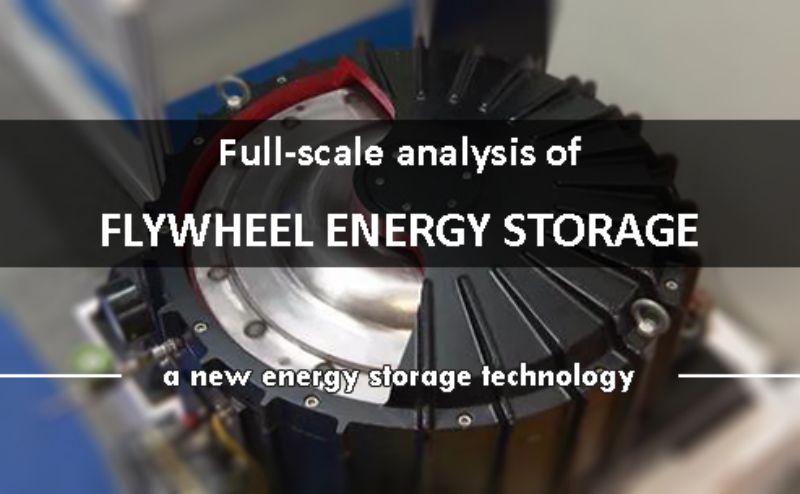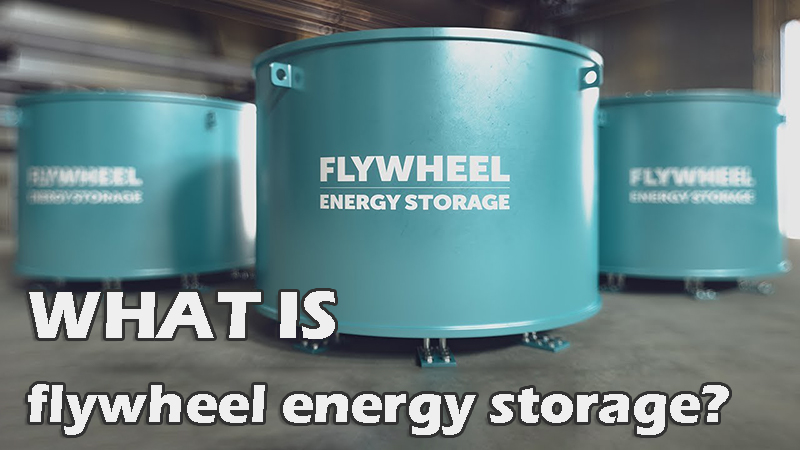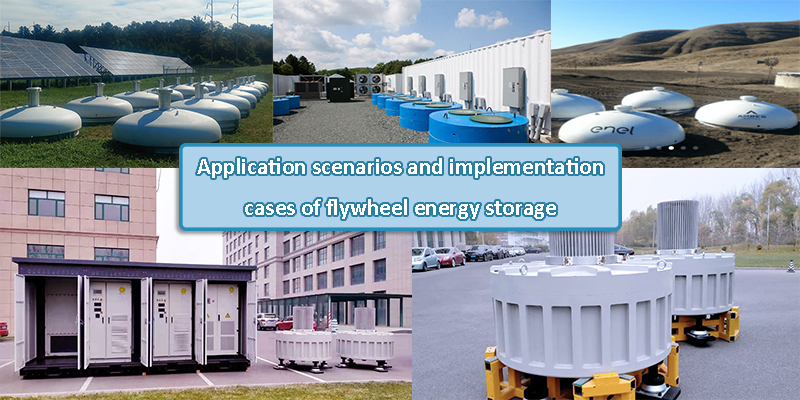
Main content:
The flywheel energy storage is a physical energy storage method, and it is also one of the few new energy storage technologies that can partially replace electrochemical batteries. At present, flywheel technology has been continuously applied in various fields. Unlike electrochemical energy storage products that can be used as home energy storage, flywheel energy storage is mostly used in industry and UPS. It can be predicted that a large share of the energy storage market in the next few years will be occupied by flywheel energy storage devices.This article will provide you with a detailed introduction to flywheel energy storage, including its working principle, market space, application scenarios and implementation cases, to help you have a more comprehensive and in-depth understanding of flywheel energy storage.
1.What is flywheel energy storage?
Flywheel energy storage is a physical energy storage method. The principle is to use the inertia of a high-speed rotating flywheel to store energy. When charging, the flywheel motor rotates at an accelerated rate, converting the electrical energy into the mechanical kinetic energy of the flywheel and storing it; when discharging, the high-speed rotating flywheel drives the generator to convert the mechanical kinetic energy into electrical energy. The flywheel energy storage system consists of three core parts: flywheel, motor-generator, and power electronic conversion device. Among them, the flywheel determines how much energy is stored, and the power electronic conversion device determines the amount of input and output energy.

The flywheel energy storage system has the advantages of fast response, long life, good temperature adaptability, high efficiency, large capacity, and environmental friendliness.
- Fast response speed: charge and discharge in milliseconds, and the working speed is between 3000-12000 rpm.
- Long lifespan: Theoretically, the number of cycles is millions (theoretically, the number of cycles for chemical batteries is 6500), and the lifespan can reach more than 20 years.
- Wide operating temperature range: insensitive to temperature and high reliability. For example, on an aerospace satellite, when the temperature is between ±100°C, the flywheel energy storage can stably supply power.
- High conversion efficiency: > 95%.
2.What is the market space for flywheel energy storage?
The data shows that by the end of 2021, the cumulative installed capacity of power storage projects in operation around the world is 209.4GW, and the cumulative installed capacity of new energy storage is 25.4GW. Among them, flywheel energy storage only accounts for 1.8% of the new energy storage, with an installed capacity of about 459.8MW. The cumulative installed capacity of power storage projects in China has reached 46.1GW, accounting for 22% of the global market. Pumped storage is still the most important, with a cumulative installed capacity of 39.8GW and a cumulative installed capacity of 5729.7MW of new energy storage, of which flywheel energy storage accounts for only 0.1%, or about 5.73MW.

Compared with other energy storage technologies, such as lithium ion solar battery, the cost of flywheel energy storage is still relatively high, and the installed capacity accounts for a small proportion of the energy storage market. However, since its materials are mainly steel and electronic components, the cost of raw materials is low, and the cost will be reduced after large-scale manufacturing; in addition, the equipment can accurately measure and control the mechanical loss and the maintenance is low. In April 2022, China's first megawatt-scale flywheel energy storage project was put into operation; on May 17, in the relevant documents issued by Hebei Province, there were two 100MW flywheel energy storage projects. From megawatts to 100 megawatts, the market space for flywheel energy storage may be broader.
3.Application scenarios and implementation cases of flywheel energy storage
Flywheel energy storage is mainly used in power grid peaking and frequency regulation, rail transit, aerospace, military industry, UPS power supply, energy storage electric vehicle charging piles and other fields.
① Power grid frequency modulation
Frequency modulation is the main application field of flywheel energy storage system in power grid. In the process of frequency modulation of the power grid, the flywheel system can quickly and effectively perform active/reactive power compensation with the change of the power grid, smooth the fluctuating load, buffer the transient of power generation output, and ensure the stability of the power grid. The value of flywheel energy storage for power grid frequency modulation is more of a companion. At present, the more common application is to cooperate with thermal power and other units to perform pitch peak and frequency modulation, as a companion auxiliary modulation method.

The United States has installed 20MW of carbon fiber flywheel energy storage for power grid frequency modulation in two states, Pennsylvania and New York, which are dominated by gas power. The flywheel system has been in operation for 12 years now. From the perspective of operation effect, a 20MW flywheel energy storage frequency modulation power plant is equivalent to 20 times the frequency modulation of thermal power units. In November 2021, Ningxia Lingwu Power's coupled 22MW/4.5MWh flywheel energy storage project started construction. This is China's first full-capacity flywheel energy storage-thermal power joint frequency modulation project, and it is also the largest flywheel energy storage project in the world.
② Rail transit
When subways, high-speed railways, and hydrogen fuel buses brake and enter the station, the flywheel energy storage is used for braking energy recovery, which realizes the secondary utilization of energy, and can be used as an emergency power source to ensure the safety of the rail transit system. On April 11, 2022, China's first 1MW flywheel energy storage device was installed and commissioned at Wannianquan Road Station of Qingdao Metro Line 3 and successfully connected to the grid. According to public data, if one subway trip every three to five minutes is calculated, each subway can save 3-4 kWh of electricity, and 500-600 kWh of electricity can be saved in a day. It is conservatively estimated that the flywheel energy storage system can help a subway station save about 500,000 kWh of electricity a year, with a power saving rate of 20%, which is of great significance in terms of energy conservation and carbon reduction in rail transit.

③ UPS power supply
In addition, flywheel energy storage is also used in UPS power supply and other fields. During the 2022 Beijing Winter Olympics, a hydrogen energy power generation vehicle was deployed, which was equipped with a magnetic levitation flywheel device for the emergency power supply of the opening ceremony and various venues. Semiconductor chip factories, data centers, etc. have high requirements on power quality. The use of flywheel energy storage technology UPS power supply can not only provide guaranteed power, but also realize power quality management through power regulation.
In the field of data centers, such as Yahoo's famous chicken coop data center, HP's mobile one-stop CleanSource data center, Verizon's data center, Georgia Institute of Technology's supercomputing center, SHANGHAI STOCK EXCHANGE, Foxconn South China Data Center, CHINAN EVERBRIGHT BANK's data centers are all using flywheel energy storage technology for energy storage and utilization. In addition, among the new energy storage demonstration projects released by some provinces in China, there are 100-megawatt flywheel energy storage demonstration projects, such as the HCIG New-energy paddock flywheel energy storage demonstration project in Hebei Province, Guohe Energy Beiken (Shijiazhuang) Jingxing flywheel energy storage demonstration projects have a capacity scale of 100MW; there are also hybrid energy storage demonstration projects of flywheel energy storage and sodium ions and lithium iron batteries.
Related article: UPS batteries, Top 10 energy storage lithium battery companies
















